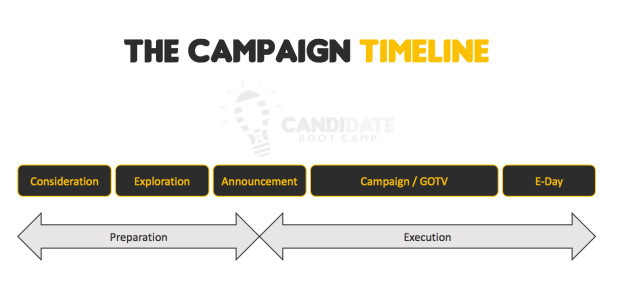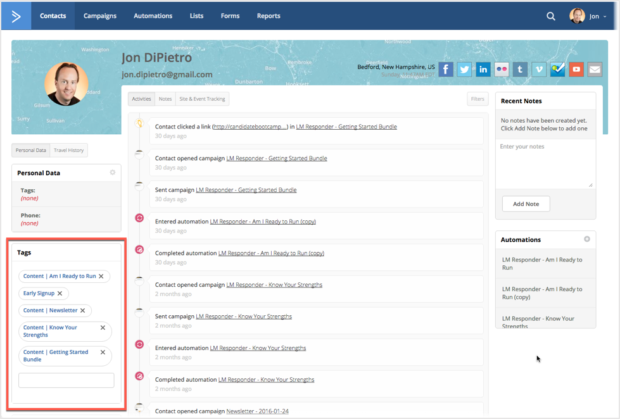


So, you think you want to run for political office? Congratulations! Our job is to make it easier for you. That’s why we’ve created this comprehensive page to show you how to run for state or local office. Here are the basic steps we’ll cover:

The very first question you need to answer is, “Am I ready to run?” Running for political office is a major commitment and you’ll want to think it through, first. The first step is to understand the office. What is the name of the office you’re running for? What are the specific traits and qualifications that this office-holder must have in order to do a good job? Why are you qualified? Write down at least three specific reasons why you are. Be sure you understand whether or not the office is partisan (Republican, Democrat, etc.) or non-partisan. How long is the term and what is the time commitment required? Are there requirements to hold the office like age, residency, etc.? What are the dates of the primary and general elections? And, finally, what do you need in order to win? Is it a plurality or a majority? Is there a run-off? The second step is to evaluate your core network. Have you discussed a potential campaign with your spouse or partner? How about your closest friends? These will be your earliest supporters, so it’s important to know if they’re on board. What about your career? Will the campaign conflict with your employment or in any way conflict with other responsibilities? Next, you will want to understand the time commitment required for the office. Will it require a leave of absence from your job? Will it be manageable with your current work/life balance or will that require some adjustment? How many hours per week will you be able to set aside for campaigning? Later, we’ll show you how to put together a campaign calendar to estimate this. Sometimes, speaking with someone who currently holds or recently held this position can describe the time commitment to you. Finally, take a look at your finances. Are you current with your local, state, and federal taxes? Do you have outstanding parking tickets or other debts owed to local, state, or federal government? And are you willing to spend some of your personal finances on the political campaign? If so, how much? You may have no idea how much you’ll need to run a campaign. A good place to start is to look up campaign finance disclosures from past races. These are public documents you should be able to find on your town, city, county, or state website. Understanding how much other candidates have raised and spent in the past (especially successful ones) will give you a ballpark estimate. If you’re not going to fund the campaign yourself, are you willing to ask friends, family, and strangers to donate? This isn’t the easiest thing to do but we’ll provide some advice.

Worksheet: Am I Ready to Run?
Running a campaign by yourself is a lot of work. It can be done, of course, but you’ll be far more successful if you can build a team of volunteers around you to help. In this section, we’ll talk about how to structure and organize your team.
How much do you need to budget for your run for office? That’s hard to know, especially if you’re running for the first time. One good way to get a ballpark estimate is to look up campaign disclosures for previous campaigns. How much have other candidates raised and spent in the past? If this is your first run, you might have first-time expenses you wouldn’t necessarily need in subsequent elections, like your website or yard signs (if you have enough left over). So, what should you spend it on? The short answer is, “Stuff that will help you earn more votes.” Hats and t-shirts, for example, may seem like a fun way to gain some exposure but they’re not nearly as effective as other methods. Likewise, expensive events can drain a lot of time and money from your campaign for relatively little benefit. Conversely, investing in traditional lawn signs and targeted direct mail are very cost effective, traditional ways to earn name recognition and exposure. Think about it this way: A $1 lawn sign on a busy street can easily be seen by thousands of people every day. How many people will see a $20 t-shirt? You can learn more about direct mail and smart budgeting from our interview with BJ Perry of Talient Action Group: https://candidatebootcamp.com/wp-content/uploads/2017/01/BJ-Perry-interview.mp3

Here’s an outline of items that would be contained in a complete campaign budget. Keep in mind that your campaign probably won’t include or require everything on this list.
We think it’s useful to think of communications in terms external and internal. External communications mean delivering your message to the outside world, while internal communication means keeping your message straight and consistent within your team.
Paid media is the first external communication channel to consider. There are lots of options available here; newspaper, print, digital, radio, television, etc. Be very careful when considering paid media and mindful of the cost per thousand impressions, or CPM. That’s a measure of how many dollars it takes to reach 1,000 people. Those costs can vary widely between medium and some of them have ways to get free coverage. Free media coverage is typically referred to as “earned media.” This frequently comes in the form of news stories in television, radio, and/or newspapers. But there are other ways to acquire earned media. In television, there may be community access cable shows that you can tap. Similarly, reach out to local talk radio stations to see if they will do interviews with candidates. And letters to the editor in newspapers are a great way to get your message out to voters. Social media is a must for any political candidate. We recommend that you create a Facebook page, first and foremost. Pages are different from your personal profile in that they are public and have no limits on how many people can “like” your page. You’ll also need one if you want to do paid Facebook advertising. In addition, you should make sure your LinkedIn profile is up to date and optimized.
We may be repeating ourselves, but this is important: If people are going to volunteer their time to your campaign, it’s critical that you value and respect their time. One way to do that is to keep them in the loop and stay on top of activities. The last thing a volunteer wants to learn is that they’ve wasted their time because of duplicated effort, misplaced priorities, etc. So make sure you’re in regular communication with your team and the left hand knows what the right hand is doing. Staying on message is also important! We’ll talk more about branding and messaging later in this article. But once you do understand what your campaign message is, everyone needs to know what it is. Ideally, you’ll want to have a communications director who can vet any work done by the team before it goes public.

The ability to send emails to supporters, donors, and voters is crucial! You don’t want to use your personal email for many, many reasons. You’ll want a professional, third-party email provider for this. There are two solutions we recommend. The first is ActiveCampaign. There’s no free version, so you ‘ll have to spring for a minimum of $9 per month. The price goes up as you add more contacts to your database. The reason this is our first choice is that in addition to sending emails to your contacts, it can also serve as your campaign database. Most candidates will use spreadsheets for this, but this far from ideal. It’s too easy to corrupt the data and it’s not particularly easy to do anything with the information. If you utilize ActiveCampaign instead, in addition to sending your contacts email you can also track all of your calls, any donations they’ve made, events, they’ve attended, etc. This is all powerful information and it’s not very expensive. If you can’t afford ActiveCampaign, then our second choice is Mailchimp. They have a free version that allows you to send up to 12,000 emails per month to a list of up to 2,000 subscribers. That’s going to be plenty for most campaigns but you’ll sacrifice the ability to use it as a campaign database. Even the paid version won’t support that type of functionality. Regardless of whether you use one of those solutions or just a spreadsheet, the list is only as good as the care you put into it. The more detail you can collect about each contact in your database, the more valuable it will be. Keep track of who is a volunteer, has donated, displays a yard sign, attended an event, etc. This will allow you to send more targeted messages to your contacts.

Ebook: How to Raise Your First $500